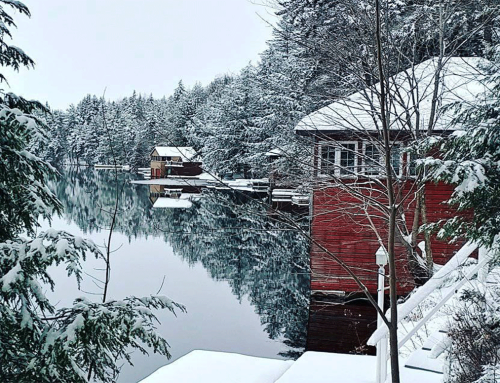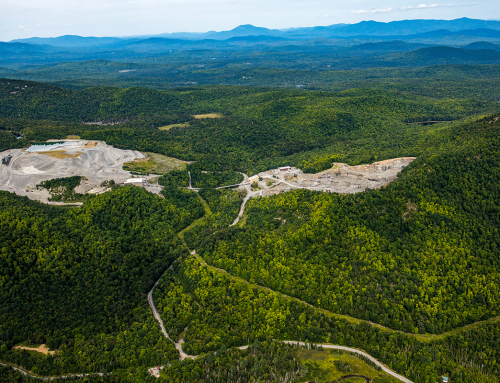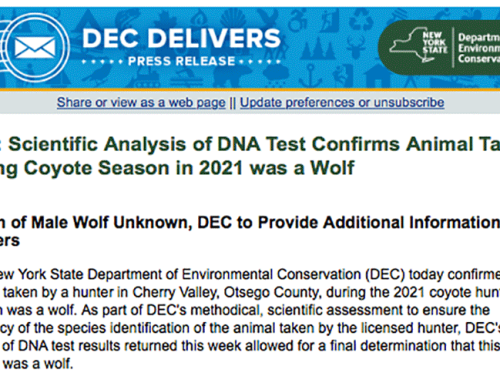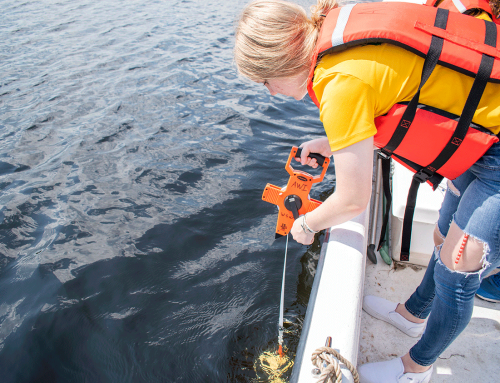Protect the Adirondacks manages the largest water quality monitoring program in the Adirondack Park in partnership with the Adirondack Watersheds Institute at Paul Smith’s College. In 2014, we over 70 lakes and ponds will be enrolled in this program, with over 100 volunteers involved.
This partnership is called the Adirondack Lakes Assessment Program (ALAP) and it’s been in operation for 17 years since 1998.
ALAP is the largest, most professional, volunteer driven water quality monitoring programs in the Adirondack Park. The goal is to build program built on long-term continuous monitoring. The data collected will be analyzed for trends about the overall water quality status and condition of a specific water body.

ALAP volunteer Bob Manning and his son takes samples from Garnet Lake in the Town of Johnsburg and Thurman. Samples are taken from the 2 meter tube, and placed into a bottle in a cooler. A Secchi disc is used to record clarity depth, which is an important water quality indicator.
Under ALAP, 69 lakes and ponds were studied in 2012. There are said to be 3,000 lakes and ponds in the Adirondack Park, the vast majority are not studied. Only 192 are being tested by ALAP and other programs, many of them mostly for acidity and not for nutrient change or changes in trophic status.
The Adirondack Watershed Institute trains volunteers in the scientific water quality monitoring protocol. PROTECT manages supplies, contact with volunteers, and collection of samples. Paul Smith’s College analyzes the samples in its certified lab. An annual report is prepared for each lake.
How are samples taken? ALAP volunteers sample their lakes for 3-month or 5-month sampling periods; whichever works best for sponsor’s schedule. Each month volunteers measure the transparency of their lake with a secchi disk, collect a bottle of water to be analyzed for various chemical components, and filter a small sample of water for chlorophyll. The filter and water sample are kept frozen until they are transported to the laboratory at Paul Smith’s College. Training for water quality measurement and sample collection is provided by PROTECT and AWI to volunteers prior to the start of their monitoring program.

ALAP volunteer Bob Manning brings back samples from the land to where chlorophyll-a filter samples are prepared. All samples are frozen and transferred to Paul Smith's College.
What does ALAP Test for? ALAP data is not just about acidity. Possibly more important for the Park’s health as a whole is the testing for phosphorus, because unnatural levels of that nutrient cause more algae growth, which usually indicates watershed development is causing too much phosphorus to get into the water body. Hard, impervious surfaces and lack of natural forest buffers generate stormwater runoff, which carries phosphorus and other nutrients and toxins from lawns and cars. Failing or faulty septic systems from old developed areas are an especially serious problem.
Rising salt levels are also something to cause concern. At low levels salt does not cause a problem except possibly to aquatic micro-life, unless the cause for the trend is discovered and stopped, there can eventually be human and animal health and water-turnover problems. Fish can be severely impacted. Also analyzed by AWI staff are alkalinity, conductivity, color, nitrate, and total phosphorus. Samples taken during a visit by AWI staff are also tested for calcium and aluminum concentrations.
Follow the links below to learn more:
- About The Program
- What Lakes Are Assessed?
- What Does ALAP Test For?
- Participant Resources
- Coliform Testing Option
ALAP provided some of the data analyzed in the report on Road de-icing effects in the Adirondack Park




